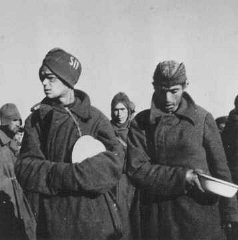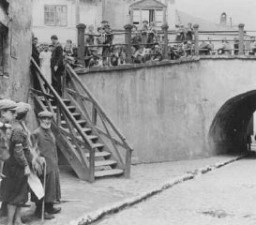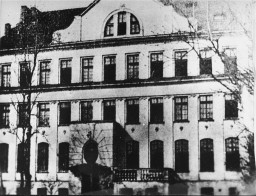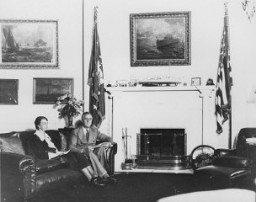You searched for: %E9%85%92%E5%BA%97%E6%8A%95%E8%B5%84%E7%B3%BB%E7%BB%9F%E5%AE%9A%E5%88%B6%E5%BC%80%E5%8F%91%E3%80%90TG%EF%BF%BD%EF%BF%BD%EF%BF%BD%EF%BF%BD%EF%BF%BD%EF%BF%BD%EF%BF%BD%EF%BF%BD%EF%BF%BD@EK7676%E3%80%91%E5%B9%B3%E5%8F%B0%E5%8C%85%E7%BD%91%E6%90%AD%E5%BB%BA%E9%85%92%E5%BA%97%E6%8A%95%E8%B5%84%E7%B3%BB%E7%BB%9F%E5%AE%9A%E5%88%B6%E5%BC%80%E5%8F%91%E3%80%90TG%EF%BF%BD%EF%BF%BD%EF%BF%BD%EF%BF%BD%EF%BF%BD%EF%BF%BD%EF%BF%BD%EF%BF%BD%EF%BF%BD@EK7676%E3%80%91%E5%B9%B3%E5%8F%B0%E5%8C%85%E7%BD%91%E6%90%AD%E5%BB%BAtVvdTt2d5k
<< Previous | Displaying results 51-75 of 206 for "%E9%85%92%E5%BA%97%E6%8A%95%E8%B5%84%E7%B3%BB%E7%BB%9F%E5%AE%9A%E5%88%B6%E5%BC%80%E5%8F%91%E3%80%90TG%EF%BF%BD%EF%BF%BD%EF%BF%BD%EF%BF%BD%EF%BF%BD%EF%BF%BD%EF%BF%BD%EF%BF%BD%EF%BF%BD@EK7676%E3%80%91%E5%B9%B3%E5%8F%B0%E5%8C%85%E7%BD%91%E6%90%AD%E5%BB%BA%E9%85%92%E5%BA%97%E6%8A%95%E8%B5%84%E7%B3%BB%E7%BB%9F%E5%AE%9A%E5%88%B6%E5%BC%80%E5%8F%91%E3%80%90TG%EF%BF%BD%EF%BF%BD%EF%BF%BD%EF%BF%BD%EF%BF%BD%EF%BF%BD%EF%BF%BD%EF%BF%BD%EF%BF%BD@EK7676%E3%80%91%E5%B9%B3%E5%8F%B0%E5%8C%85%E7%BD%91%E6%90%AD%E5%BB%BAtVvdTt2d5k" | Next >>
-
Belzec
ArticleBelzec was the first of three killing centers in Operation Reinhard, the SS plan to murder almost two million Jews living in the German-administered territory of occupied Poland.

-
Mauthausen
ArticleThe Mauthausen concentration camp was established following the Nazi incorporation of Austria in 1938. Learn about the harsh conditions in the camp.

-
Soviet prisoners of war wait for rations
PhotoSoviet prisoners of war wait for food in Stalag (prison camp) 8C. More than 3 million Soviet soldiers died in German custody, mostly from malnutrition and exposure. Zagan, Poland, February 1942. Second only to the Jews, Soviet prisoners of war were the largest group of victims of Nazi racial policy.

-
Lublin ghetto
PhotoResidents of the Lublin ghetto. Poland, 1941-1942. (Source record ID: E9 NW 33/IV)

-
The Weimar Republic
ArticleThe Weimar Republic was a liberal democratic republic founded in Germany in the aftermath of WWI. Learn about the era’s political and economic crises and social trends.

-
Neuengamme
ArticleIn 1938, the Nazis established Neuengamme concentration camp. Learn more about camp conditions, medical experiments, and liberation.

-
Lodz
ArticleNazi authorities established the Lodz ghetto in 1940. Learn about living conditions and forced labor in the ghetto, as well as deportations to and from there.

-
The Rwanda Genocide
ArticleFrom April to July 1994, extremist leaders of Rwanda’s Hutu majority directed a genocide against the country’s Tutsi minority. Learn more

-
Börgermoor Camp
ArticleBörgermoor was part of the Nazi regime’s early system of concentration camps. It was located in the Emsland region of Prussia.
-
Jewish women at forced labor
PhotoJewish women deported from Bremen, Germany, are forced to dig a trench at the train station. Minsk, Soviet Union, 1941. (Source record ID: E9 NW 33/IV/2)

-
Writing the News
ArticleShortly after taking power in January 1933, Adolf Hitler and the Nazis took control of German newspapers, detailing how the news was to be reported.

-
Gross-Rosen
Media EssayGross-Rosen became an independent concentration camp in 1941. The camp eventually expanded to become the center of an industrial complex and to include a vast network of at least 97 subcamps.
-
Jeno Muhlrad
ID CardJeno was the youngest of five children born to Jewish parents living in a suburb of Budapest. His father was a wholesale merchant who sold beer to restaurants and stores. After receiving a university diploma, Jeno became a pharmacist. He and his wife, Aranka, and their two children, Eva and Andras, shared a large old house in Ujpest with Jeno's father and other members of the extended family. 1933-39: Jeno's friends and family have helped him raise the large amount of money he needs to lease his own…

-
Dora Unger
ID CardDora, her parents, brother, aunt, uncle, and two cousins lived together in her grandfather's home in Essen, Germany. The Ungers were an observant Jewish family, and when Dora was 8, she began to regularly attend meetings of Brit HaNoar, a religious youth organization. 1933-39: In October 1938 a teacher, with tears in her eyes, came to Dora at the municipal pool, saying "Jews cannot swim here anymore." Just weeks later, on November 9, Jews were arrested and their property destroyed. A neighbor tried to…

-
Jeno Nemeth
ID CardJeno moved to Szentes from a tiny farming community near the city of Szolnok, where he and his two brothers had been born to Jewish parents. Jeno owned a store that carried groceries and hardware items. He lived in the southeast Hungarian town of Szentes. Jeno and his wife, Juliana, had two married daughters, Barbara and Margit. Their son, Desider, was a dentist in Szentes. 1933-39: Jeno and his wife work hard in their store. The Depression of the 1930s was devastating, but things are starting to get a…

-
Ravensbrück
ArticleLearn about conditions and the treatment of prisoners in Ravensbrück, the largest concentration camp for women in the German Reich.

-
Collaboration
ArticleTo perpetrate the Holocaust, Nazi Germany relied on the help of allies and collaborators from across Europe, including governments, institutions, and individuals.

-
Subcarpathian Rus (Ukraine)
ArticleLearn more about the Transcarpathian region of Ukraine (Subcarpathian Rus) before and during World War II.

-
Hidden Children: Hardships
ArticleParents, children, and rescuers faced daunting challenges once the decision was made for a child to go into hiding during the Holocaust.

-
Klaus Barbie: The Butcher of Lyon
ArticleKlaus Barbie, chief of the Gestapo in Lyon, France, was nicknamed the "Butcher of Lyon" for his brutal actions towards Jews and members of the French Resistance.
-
The Krochmalna Street Orphanage
PhotoExterior view of the Jewish orphanage run by Janusz Korczak. Established in 1912, the orphanage was located at 92 Krochmalna Street in Warsaw, Poland. Photo taken circa 1935.

-
Law on the Head of State of the German Reich
ArticleThe Law on the Head of State of the German Reich was the last step in destroying democracy in interwar Germany and making Adolf Hitler a dictator. Learn more.
-
Gross-Rosen - Maps
Media EssayGross-Rosen became an independent concentration camp in 1941. The camp eventually expanded to become the center of an industrial complex and to include a vast network of at least 97 subcamps.
-
Wetzlar Displaced Persons Camp
ArticleAfter WWII, many Holocaust survivors, unable to return to their homes, lived in displaced persons camps in Germany, Austria, and Italy. Read about Wetzlar DP camp.

-
Eleanor Roosevelt
ArticleEleanor Roosevelt, longest serving First Lady in US history, used her social and political influence to intervene on behalf of refugees before and during WWII.

